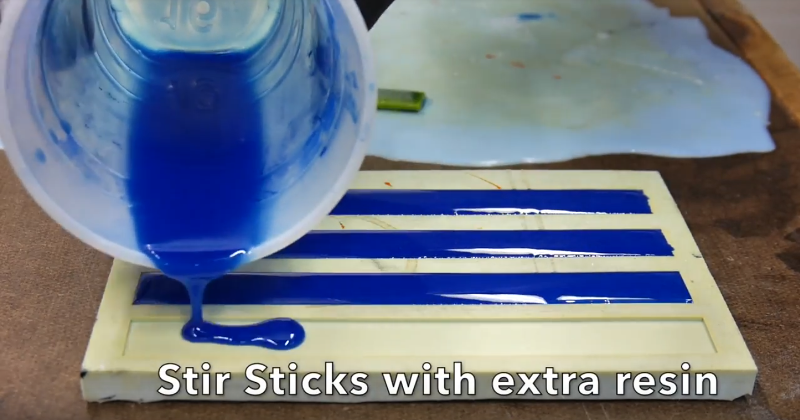When it comes to resin casting, time is of the essence. It helps to gather everything you’ll need and have it within reach before starting. But if you don’t know what you don’t know, it can be difficult to anticipate needs. Luckily, [Botzen Design] has a few tricks up his sleeve that will save time, materials, and sanity for novices and old hands alike.
It may seem somewhat obvious to mix up resin in a disposable or reusable plastic cup. But not all cups are created equal. Polypropylene cups won’t outgas into your resin, but polystyrene will. If you use a silicone cup or any polypropylene food container marked #5/PP, cured resin will peel cleanly off of the cup walls.
For some reason, the giant jugs of resin [Botzen Design] uses don’t come with pumps. How do they expect someone to meter out exact amounts of resin and hardener while pouring them out of gallon jugs? Stadium-style condiment pumps at a restaurant supply store make things much simpler while avoiding costly spillage.
Our favorite tip (and seemingly [Botzen Design]’s as well) is the drip hammer. When air bubbles mature into craters, they can be filled easily and precisely with a drop or two of wet resin. A pipette would probably just get clogged, but an icicle of cured resin hanging from a stick makes the perfect drip applicator.
Want to get into resin casting but don’t know where to start? Hackaday’s own [Gerrit] has you more than covered.

















I just buy a 50 pcss pack of PP small dixie cups/relish containers and toss em after the cast. (I use a lot of pigments/fillers, so the plastic scratches from mixing those in, making them hard to clean.)
Instead of casting your own silicone pad, just buy a huge, perfectly cast silicone kitchen mat for €2,-.
i think you missed the point of those tips :) the silicone mat is from excess silicone you would have used for something else
The pumps on the jugs are actually how the supplier intents the liquids to be metered out. Look in your suppliers catalog and they’ll probably have a pump set with the correct volumetric mix ratios for each of their products.
For instance, completely random google search result for “resin pump set”: https://www.timbecon.com.au/joinery/adhesives/301-epoxy-resin-pump-set
Make sure the pump set you use have the correct volume mix ratio set in the pumps and you can get the right mix every time by just putting one pump of A and one pump of B into the cup. Use low volume pumps if you only make short batches. One of my previous jobs had a system that metered out a full 500ml of epoxy at a time. Bit much if you’re not coating most of a boat at a time with the stuff like we were.
This Guy has the answer. Those pumps are just standard restaurant pumps with “calibrated” stop sleeves made of split tubing snapped onto the pump shaft to limit the stroke – you can build your own if you have to.
Also those bubbles can be dealt with by running a torch over the surface before the mix cures (SOP for bartop casting resin: https://youtu.be/wol60lhMf6E )
Another good resource is the Guerrilla guide to CNC machining, mold making, and resin casting – http://lcamtuf.coredump.cx/gcnc/
Great ideas. Have ventilation too. I seem to get skin conditions around some of the polymers if get them on me and I feel like I was doing laborer jobs just around the fumes, like mentally not all there afterwards.
Excellent video also. I do have XLHED so I tend to be allergic and sensitive to more than most.
Question for someone who uses them: how machinable are these kinds of resins?
When he shows casting his “stir sticks”, I wondered just how useful those could really be, once you’ve got a pile of them made. Could you cast a larger bar of resin and then machine it into parts for other projects later, I wonder?
epoxies and other resins don’t often adhere well to un-treated cured resins. The solution is to sand the surface to rough it up. However, if you want an optically consistent cure, this will not likely produce a good result. The interface where the new cure is, will usually remain visible in all such cases.
Unless you happen to be producing multiple sets of waste resin in a short timeframe, in which case, you could have a vessel that you apply multiple waste resins to, while previous waste pours were still in a state of mostly uncured, you could then get fairly consistent and well adhered multi-pour blocks.